This article highlights the key considerations for setting up Natural Environment Teaching (NET) within the framework of Applied Behavior Analysis (ABA) therapy. It’s all about personalized strategies, family involvement, and creating supportive learning environments. These elements are crucial for enhancing engagement and helping children with autism generalize their skills. Research shows that tailored approaches can lead to significant improvements in communication and social skills. Let’s explore this together and see how these strategies can make a difference!
Natural Environment Teaching (NET) is truly leading the way in innovative approaches within Applied Behavior Analysis (ABA) therapy! 🌟 It highlights the significance of learning in real-world contexts, which is so important for our kids. By tapping into each child's unique interests and environments, NET not only boosts engagement but also makes therapeutic interventions more effective.
As families embark on this exciting journey, it’s natural to have questions about how to customize these strategies to help your child thrive. What key considerations can turn everyday activities into meaningful learning experiences? Let’s explore this together! We’re here to help you every step of the way!
At Rori Behavioral Innovations Inc., we believe in a personalized approach to ABA therapy. When setting up natural environment teaching, our focus on Natural Environment Teaching (NET) strategies allows us to cater to each individual's unique needs. By conducting thorough evaluations, our clinicians can pinpoint specific growth areas and create tailored interventions that resonate with the individual's interests and surroundings. This customized method not only boosts engagement but also leads to meaningful learning experiences that truly connect with daily life.
Research highlights that personalized strategies are crucial when setting up natural environment teaching to significantly enhance participation in therapy for young individuals. This, in turn, leads to improved outcomes in communication, social skills, and adaptive behaviors. In fact, studies show that ABA therapy has an impressive success rate of over 89% in helping youth with ASD. This reinforces the effectiveness of our strategies!
Young individuals are more likely to transfer the skills learned in therapy to real-world situations when setting up natural environment teaching in familiar settings. This underscores the importance of personalized approaches in autism care. We encourage parents to actively collaborate with therapists, discussing their child’s interests and natural environments. Together, we can create a supportive and enriching therapeutic experience. Let’s explore this journey together!
Natural Environment Teaching (NET) is a vital, evidence-informed approach within Applied Behavior Analysis (ABA) therapy that is particularly important when setting up natural environment teaching, focusing on learning in real-world settings. When setting up natural environment teaching, the heart of NET is all about learner-led education. Here, the individual's interests steer the therapy, sparking intrinsic motivation and engagement. Kids can learn in ways that truly matter to them by weaving teaching moments into daily activities when setting up natural environment teaching.
The perks of NET are impressive! It enhances skill generalization, helping young learners apply what they’ve learned in various environments like home, school, and the community. Building independence and confidence in children with autism is essential when setting up natural environment teaching through this real-world application. Plus, NET makes learning fun and relevant, as kids are more likely to engage actively when setting up natural environment teaching that reflects their interests in the educational journey.
You can see youth-directed education in action during everyday activities, like grocery shopping or family meals, where kids practice essential skills like budgeting and decision-making. A case study on incidental teaching shows that leveraging naturally occurring opportunities promotes development tailored to the child's interests, boosting their engagement and skill acquisition.
Experts point out that this method not only improves communication and social skills but also nurtures emotional regulation and understanding, making it a well-rounded approach for supporting youth development when setting up natural environment teaching. As Becky, a Son-Rise Program Teacher, puts it, 'NET focuses on learning in real-life environments—especially when setting up natural environment teaching, where skills matter most.'
All in all, the youth-led aspect of NET, along with its focus on practical applications, significantly boosts the effectiveness of autism education and therapy. It empowers individuals to thrive in their daily lives. Parents can play a key role by seeking ways to weave education into everyday routines, turning regular activities into valuable teaching moments. Let’s explore this together!
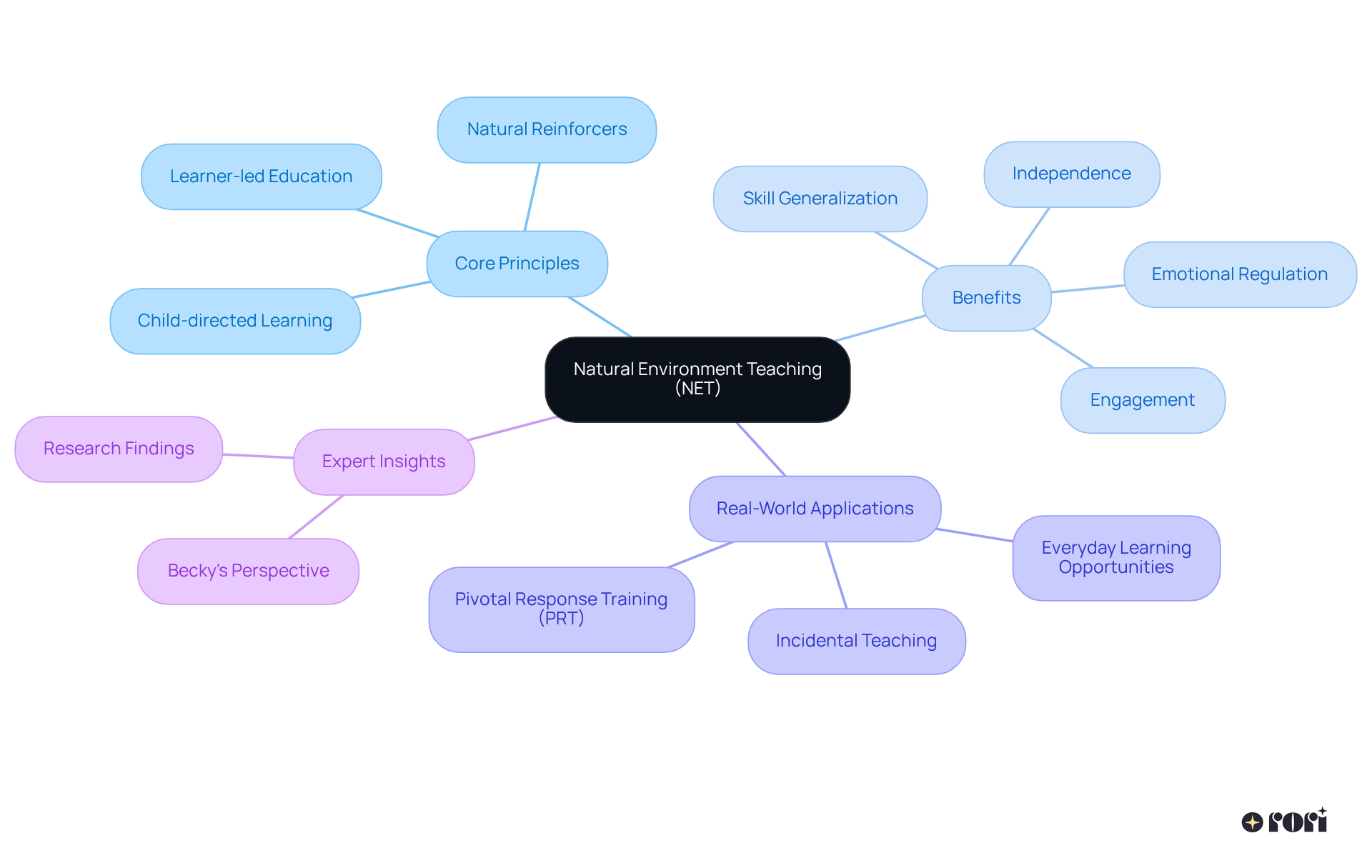
Incorporating Natural Environment Teaching (NET) methods into daily practices can truly enhance education for youngsters with autism when setting up natural environment teaching. For example, during mealtime, parents might encourage their kids to:
Grocery shopping is another fantastic opportunity; parents can engage their little ones in:
This turns everyday tasks into fun learning experiences.
Research shows that individuals with autism often retain information better when setting up natural environment teaching in familiar settings. In fact, studies indicate that structured routines can boost retention rates by up to 30%! By weaving education into daily life, parents can create a more engaging and supportive atmosphere that fosters their child's growth.
To take this approach even further, why not set specific educational goals for each activity? For instance, aim to teach a new word or concept during mealtime or while out shopping. Let’s explore this together! Your involvement can make a world of difference in your child's development.
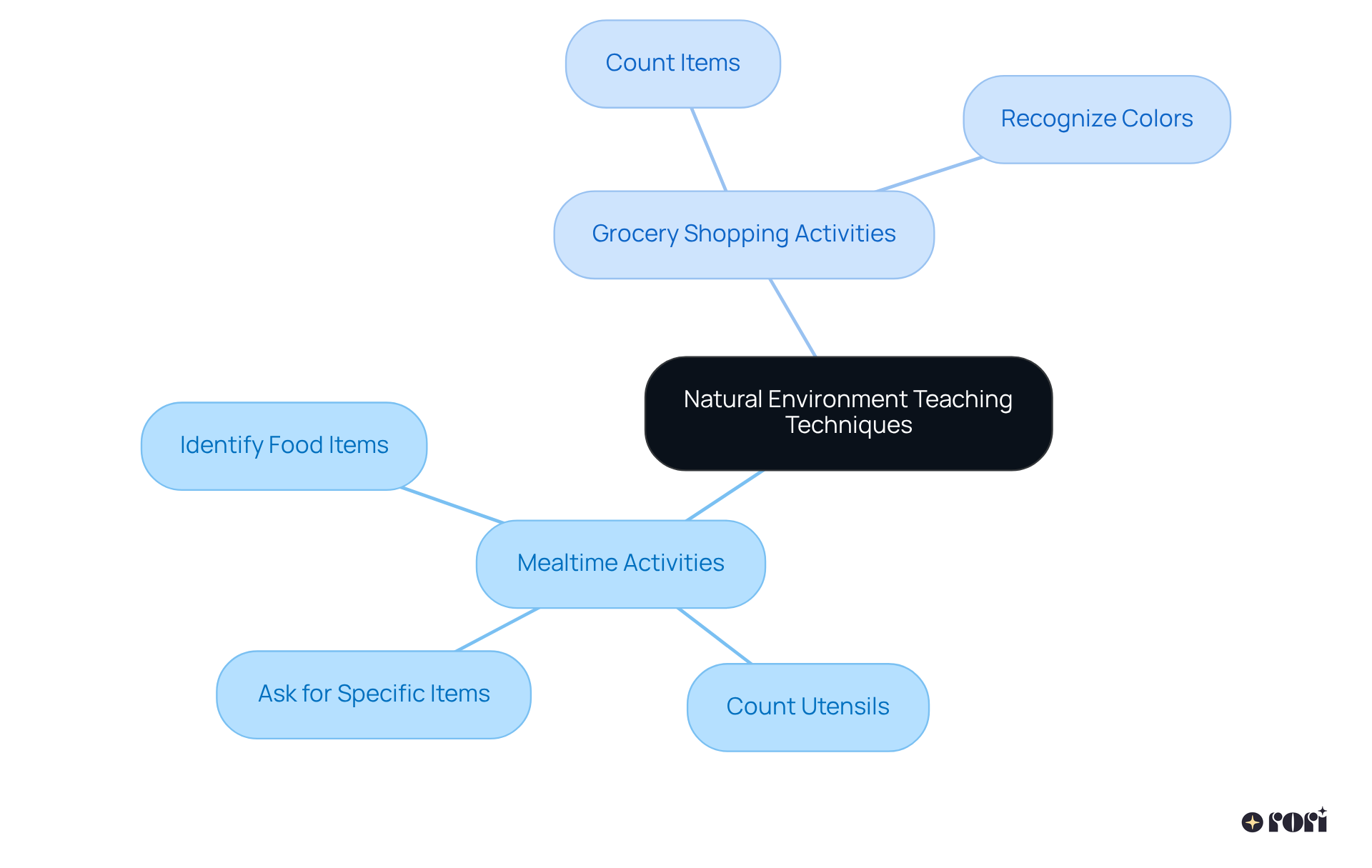
Tracking progress in NET can feel overwhelming, but it doesn’t have to be! By using simple data collection methods like frequency counts, anecdotal records, and observational notes, parents and clinicians can really make a difference. Think about using handy tools like checklists or mobile apps to capture those important educational moments and skill gains.
When we consistently look at this data, we can make informed choices about your child's treatment plan. This ensures that the strategies we use are effective and adapt to your child's changing needs. Let’s explore this together and find the best path forward for your little one!
![]()
Collaboration among professionals, like Board Certified Behavior Analysts (BCBAs) and therapists, is essential when setting up natural environment teaching to make it truly effective. When families communicate regularly with these professionals, it opens up a wonderful exchange of insights, strategies, and progress updates. This teamwork helps everyone stay on the same page, creating a supportive learning environment that nurtures a young person's growth both at home and during therapy sessions.
Research shows that families who get involved in therapy see amazing improvements in their children's social skills and communication. When families actively engage with therapists, they can reinforce the skills learned in therapy, making it easier for those skills to shine in everyday situations. Plus, bringing in extended family members can boost treatment success by providing companionship and social opportunities for individuals with autism.
Successful collaboration not only enhances communication and interpersonal skills but also leads to better outcomes for individuals with autism. As Rori Behavioral Innovations Inc. highlights, having parents and caregivers involved in the therapeutic process can be transformative. It helps skills and behaviors transition smoothly from therapy sessions to daily life. By tapping into the diverse skills of a multidisciplinary team, we can significantly enhance the effectiveness of NET strategies when setting up natural environment teaching, ensuring that each individual's unique needs are thoroughly addressed.
Let’s explore this together! We’re here to help you every step of the way!
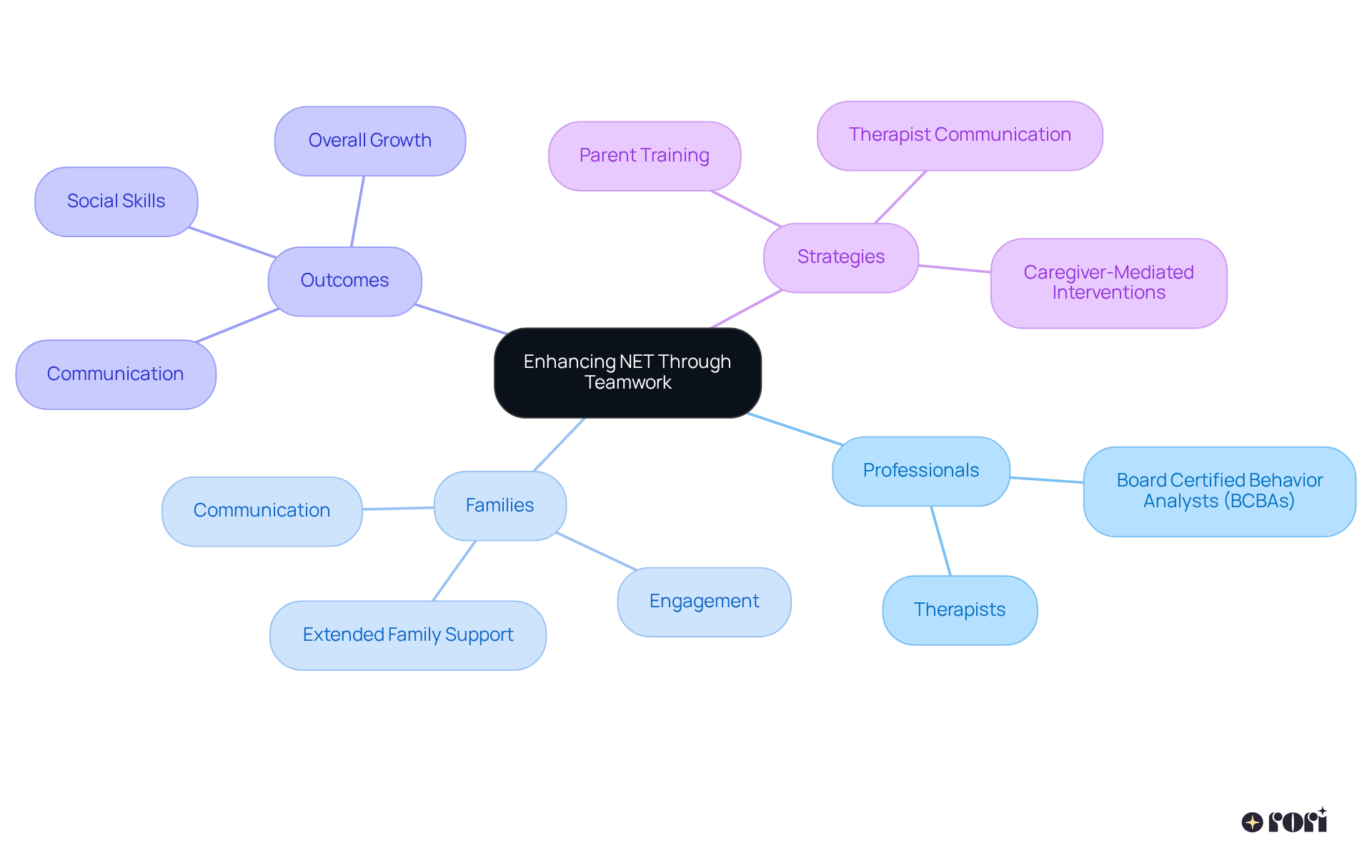
Creating a supportive educational environment is all about considering both the physical space and the emotional atmosphere. Parents can set up specific study areas that are free from distractions and filled with engaging resources that resonate with their child's interests. Plus, fostering a positive emotional environment—where kids feel safe, valued, and understood—can really boost their exploration and growth. Using visual aids, like schedules and prompts, is especially helpful for enhancing reading comprehension in autistic individuals, making them feel more comfortable and ready to dive into learning activities.
Structured environments play a key role, as they help improve social interactions and following instructions. For example, having designated quiet areas can provide kids with a cozy retreat for self-soothing, while visual aids can clarify daily routines, making transitions a breeze. Additionally, sensory-friendly settings are vital for managing sensory overload, allowing young ones to navigate their experiences with confidence. By weaving these elements together, parents can create enriching environments that support their child's development and success in ABA therapy. Let’s explore this together!
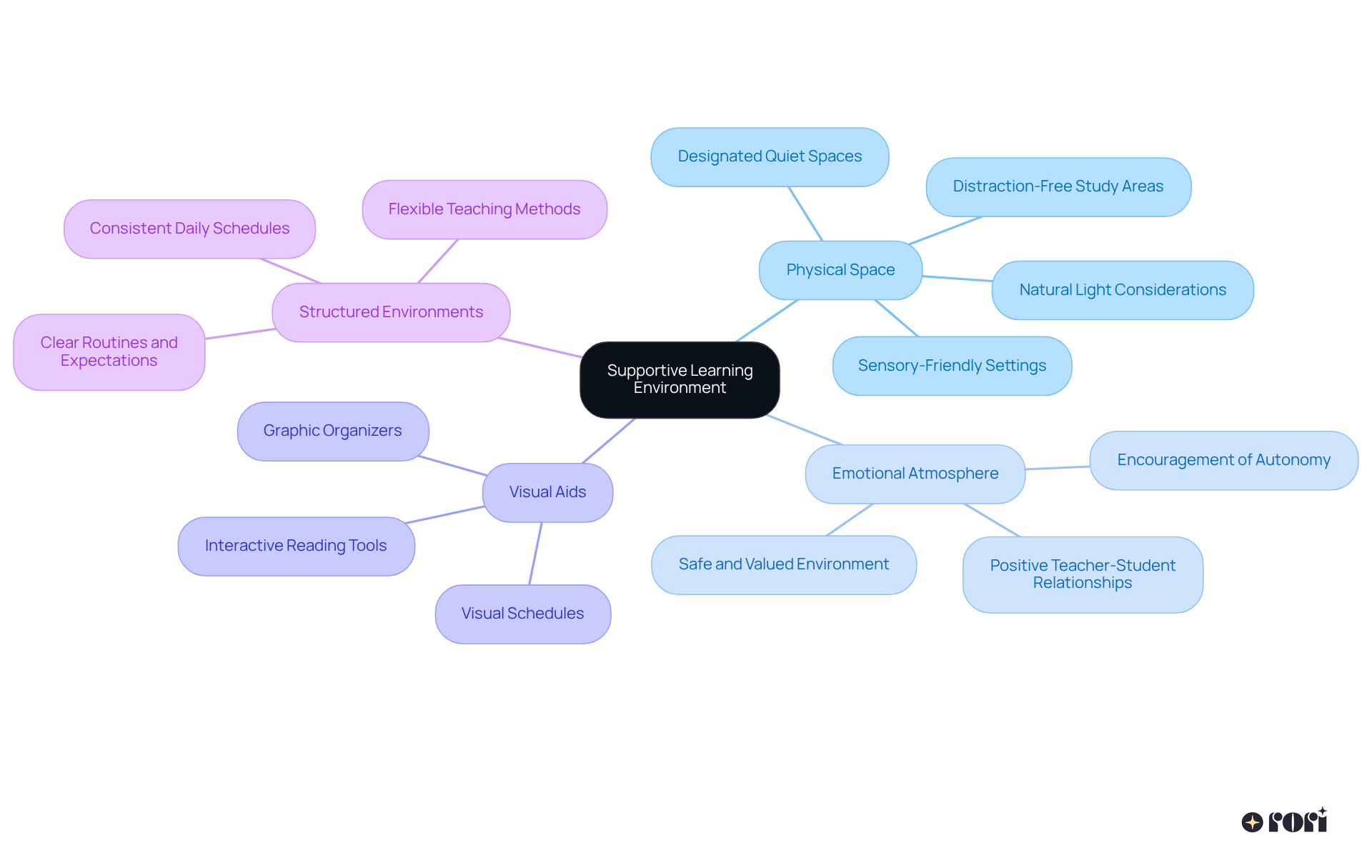
Engaging family members when setting up natural environment teaching (NET) is so important for reinforcing learning and ensuring consistency. Parents and siblings can jump in during everyday activities like cooking or playing games, creating those perfect teaching moments. This involvement not only provides young individuals with extra support but also aids in skill generalization across different environments and interactions when setting up natural environment teaching. Did you know that young individuals with supportive family involvement are 81% more likely to complete high school? That’s a powerful reminder of the long-term benefits of family engagement!
Siblings, too, can play a big role in enhancing educational experiences. They can serve as role models and motivate youngsters to appreciate education. Individuals with autism can build resilience, boost social skills, and foster independence when setting up natural environment teaching by bringing family members into the educational journey. This ultimately leads to more successful outcomes in their academic journeys.
Let’s not forget about the importance of regular communication with teachers. It allows parents to provide targeted support at home, reinforcing that holistic approach to education that active family participation nurtures. So, let’s explore this together! Your involvement can make a world of difference!
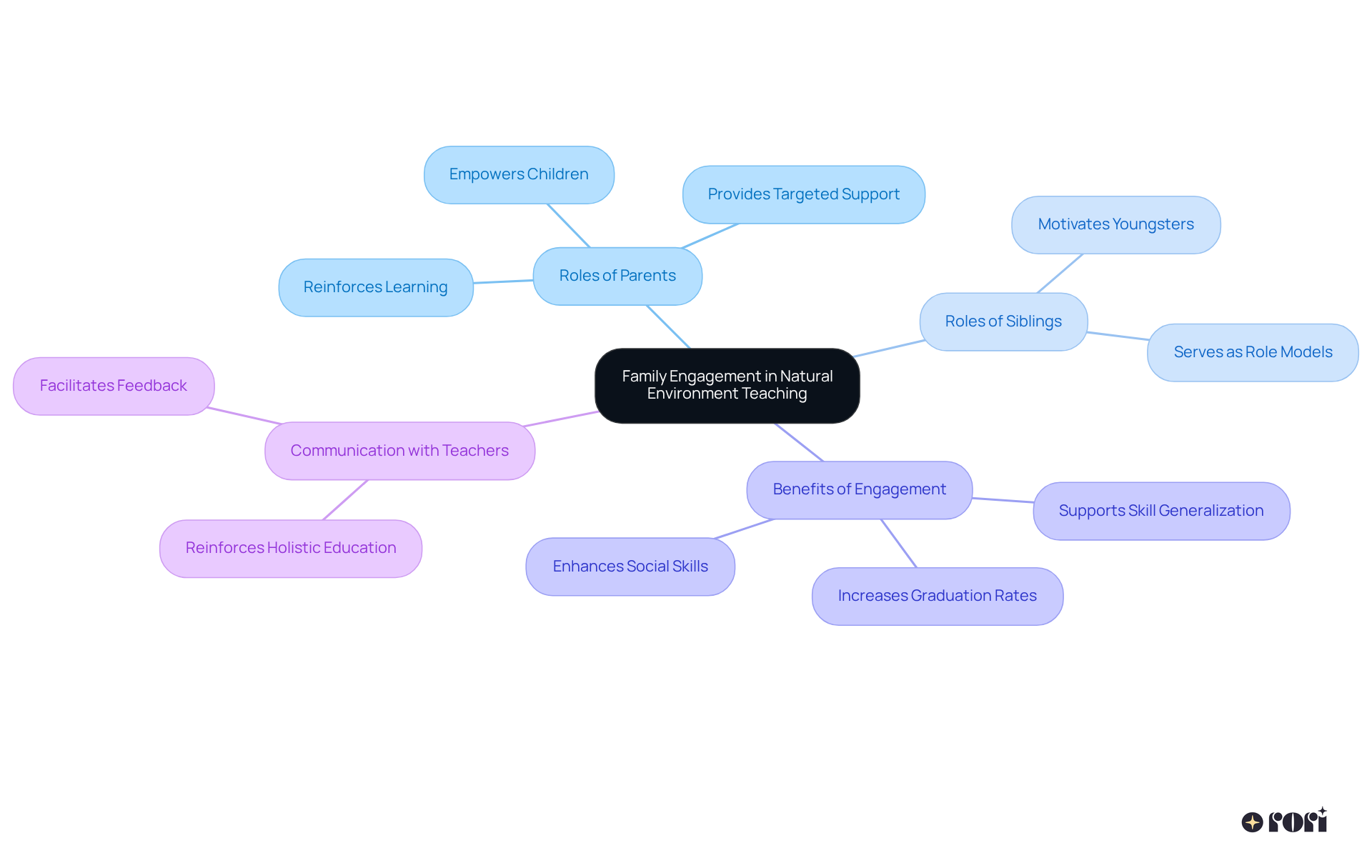
It is crucial to customize strategies when setting up natural environment teaching (NET) to help every student shine! 🌟 It all begins with a thorough look at each child’s unique strengths, interests, and learning styles. Just like Rori Behavioral Innovations Inc. emphasizes in their personalized autism care, aligning activities with what excites your child can create truly engaging educational experiences.
For example, if your little one loves outdoor adventures, incorporating nature walks into their learning can boost their motivation and help them develop skills in a fun, meaningful way. Research shows that when educational strategies are tailored to a child's interests, their engagement and retention of skills significantly improve, leading to better outcomes. Did you know that ABA therapy boasts an impressive 89% success rate in supporting youth with ASD? This really highlights how effective personalized approaches can be!
Plus, family involvement is crucial in therapy! It strengthens the bond between your child and their learning journey. To start discovering your child's interests and strengths, why not keep a journal of their favorite activities? Share this with their therapist when setting up natural environment teaching strategies that resonate with them. Let’s explore this together and make learning a joyful adventure!
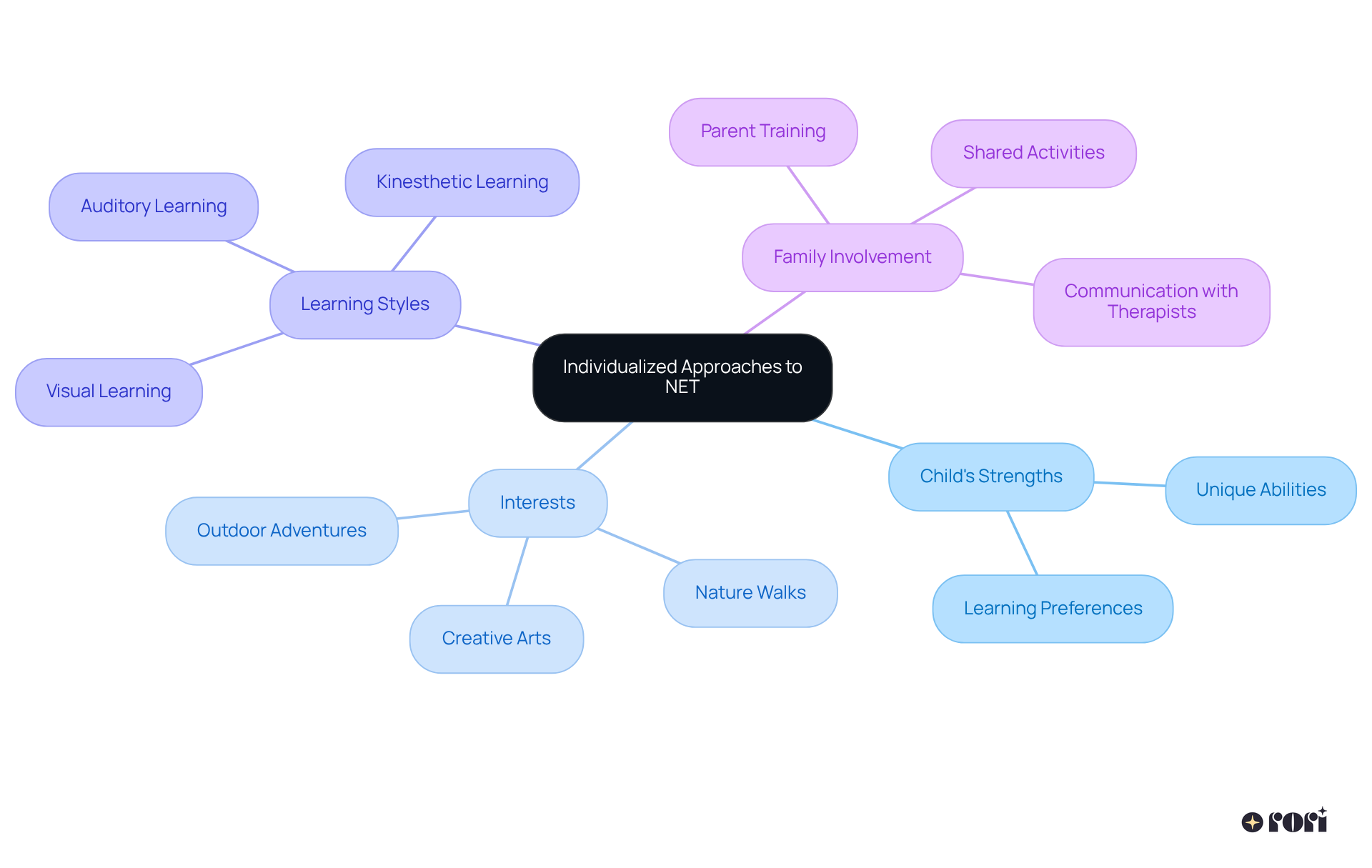
Implementing Natural Environment Teaching (NET) can definitely come with its challenges, especially when setting up natural environment teaching, generalizing abilities, and keeping motivation high. But don’t worry! Families can create structured routines that weave educational opportunities into everyday activities. This approach not only helps strengthen skills but also makes learning a natural part of the young person’s environment.
It's super important to use positive reinforcement strategies to keep that motivation and engagement alive. For instance, rewarding kids for their efforts can really boost their enthusiasm for educational activities. Research shows that young individuals who receive NET, along with NET+DTT, make significant strides in adaptive skills, proving just how effective these strategies can be. Regularly checking in on the student’s progress is key; it allows families to adjust their approaches as needed, ensuring that education stays relevant and effective.
Incorporating a mix of fun and preferred activities can also spark interest and keep motivation high. Think about using toys or games that the young learner enjoys during teaching sessions—this can lead to more enthusiastic participation! As expert Amelia Yanchik points out, "These findings emphasize the critical role ABA plays in language development and social functioning, both essential aspects of emotional growth." By fostering an engaging and supportive educational environment, families can help their youngsters thrive when setting up natural environment teaching, ultimately enhancing their communication and social skills. Let’s explore this together!
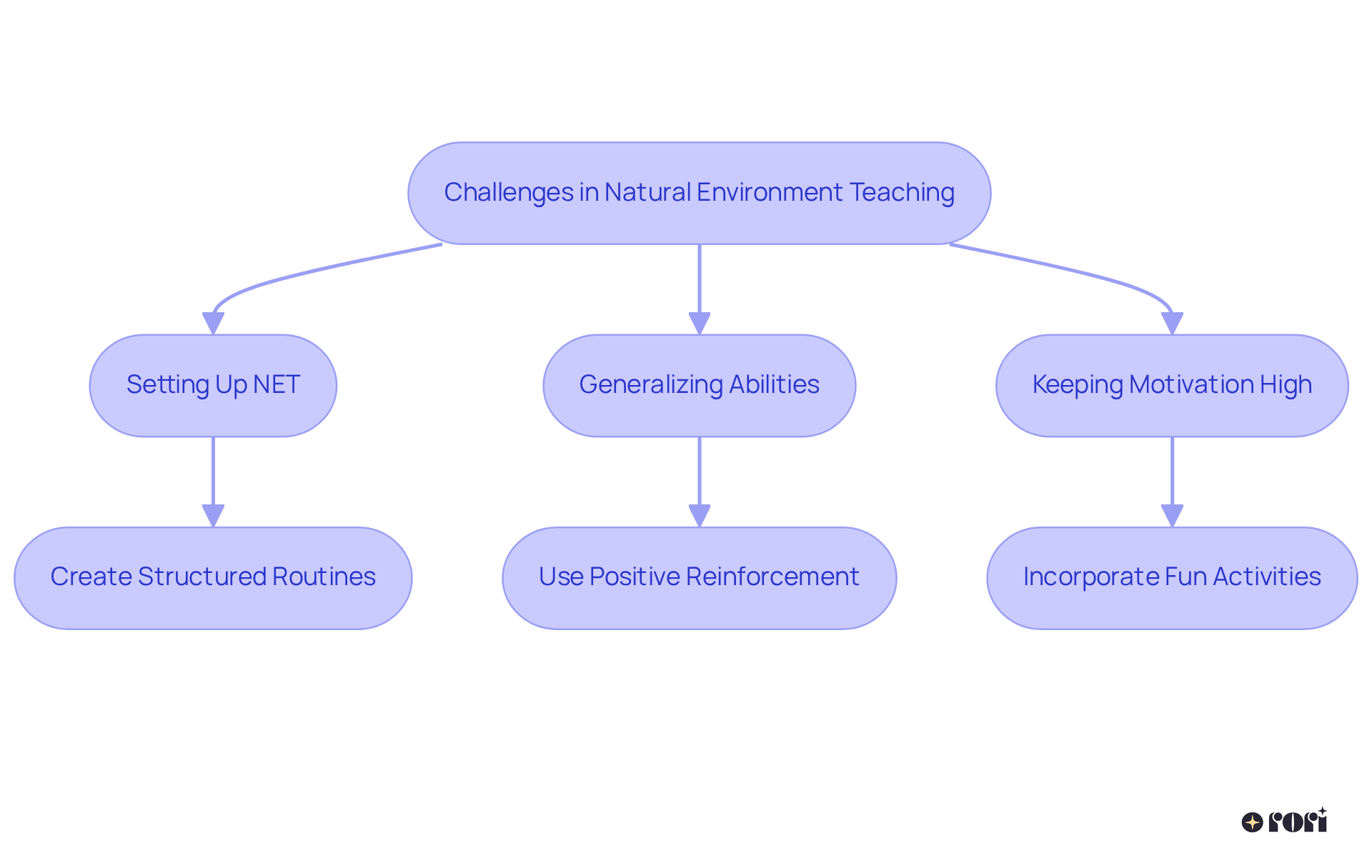
Natural Environment Teaching (NET) offers transformative benefits that go beyond just learning new skills. By igniting a love for education and promoting independence, NET equips children with essential abilities that are useful in various situations.
Many families notice wonderful changes in their children's communication and social skills, which boosts their confidence. For instance, kids often demonstrate improved social skills through spontaneous interactions during playtime—these moments are crucial for their development.
Research shows that NET is associated with positive changes in social communication, highlighting its role in nurturing these important skills. Reflecting on these encouraging outcomes not only emphasizes the value of NET but also inspires families to continue using these strategies, supporting their child's growth and development.
Let’s explore this together!

Natural Environment Teaching (NET) is a wonderful approach in Applied Behavior Analysis (ABA) therapy that truly values each child's unique interests and surroundings. By weaving learning into real-life contexts, NET not only boosts engagement but also helps children acquire meaningful skills that they can use in their everyday lives.
As we wrap up this exploration of NET, let’s remember the importance of personalized strategies, family involvement, and collaboration with professionals. Practical techniques, like turning daily activities into educational moments and tracking progress through data collection, highlight just how effective this teaching method can be. Ultimately, the benefits of NET go beyond skill development; they nurture a child's confidence and independence, which are so vital for their growth.
Engaging in Natural Environment Teaching isn’t just about education; it’s about creating a supportive ecosystem where children can truly thrive. Families, educators, and professionals need to come together to make learning enjoyable and effective. By embracing these strategies, every child can start a fulfilling educational journey that sets them up for success in their daily lives. Let’s explore this together and ensure our children have the best opportunities to shine!
What is Rori Care's approach to ABA therapy?
Rori Care employs a personalized approach to ABA therapy, focusing on Natural Environment Teaching (NET) strategies that cater to each individual's unique needs through thorough evaluations and tailored interventions.
What are the benefits of Natural Environment Teaching (NET)?
NET enhances skill generalization, allowing young learners to apply what they’ve learned in various real-world settings. It builds independence and confidence, makes learning fun and relevant, and improves communication, social skills, and emotional regulation.
How does personalized ABA therapy impact young individuals with autism?
Personalized ABA therapy significantly enhances participation in therapy, leading to improved outcomes in communication, social skills, and adaptive behaviors. Research indicates an impressive success rate of over 89% in helping youth with ASD.
How can parents collaborate with therapists in the NET approach?
Parents are encouraged to actively discuss their child’s interests and natural environments with therapists to create a supportive and enriching therapeutic experience, tailoring interventions to resonate with the child's daily life.
Can you provide examples of practical NET techniques for everyday learning?
Yes! During mealtime, parents can encourage children to identify food items, count utensils, and ask for specific items. Grocery shopping can involve counting items and recognizing colors, turning everyday tasks into engaging learning experiences.
What impact does familiar settings have on learning retention for individuals with autism?
Research shows that individuals with autism often retain information better in familiar settings, with structured routines potentially boosting retention rates by up to 30%.
How can parents set educational goals during daily activities?
Parents can set specific educational goals for each activity, such as teaching a new word or concept during mealtime or while out shopping, to enhance their child's learning experience.